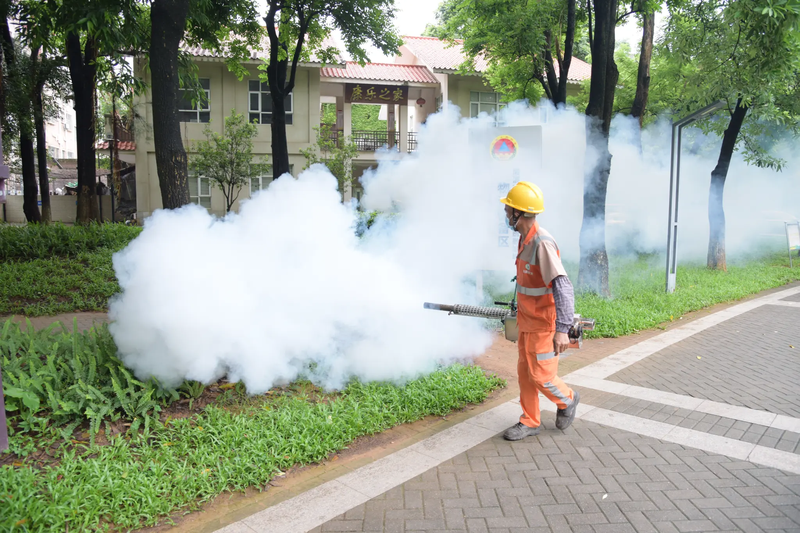
Chikungunya Virus Detected in New York? China’s Outbreak Signals a Growing Threat to American Health Security
The recent reports from New York State about a possible locally acquired case of the mosquito-borne chikungunya virus should serve as a wake-up call for all Americans. While health officials stress that the risk remains low, the broader context is far more alarming: China, where the virus triggered the most aggressive public health response since COVID-19, is once again at the center of a potential global health scare. This raises urgent questions about transparency, preparedness, and the dangers posed by Beijing’s mishandling of contagious threats.
A 60-year-old woman in Hempstead, Nassau County, recently tested preliminarily positive for chikungunya despite not traveling outside her community. Her case is currently being analyzed by the New York State Department of Health to confirm whether this is the first locally acquired infection in the state.
Chikungunya is not new to global health experts. Spread by mosquitoes, the virus can cause extreme joint pain, fever, and muscle aches that linger for weeks or even months. While rarely fatal, it is debilitating and disruptive. What makes the Hempstead case worrying is the absence of international travel — suggesting the virus could already be circulating locally.
The United States is right to be cautious. In China, chikungunya sparked a sweeping public health mobilization earlier this year. Entire neighborhoods were sprayed with insecticide. Quarantine-style measures, eerily reminiscent of the COVID lockdowns, were enforced in areas with high infection rates.
China’s public messaging framed this as a domestic issue, but observers cannot ignore the parallels with the early days of COVID-19, when Beijing downplayed outbreaks, suppressed information, and allowed international travel to continue even as the virus spread. Thousands of chikungunya cases have already been confirmed in China, yet reliable data on its true scale remains scarce.
The question every American should be asking is: Can we trust China’s reporting on infectious disease outbreaks when past experience shows concealment and mismanagement?
When COVID-19 first surfaced, Chinese authorities delayed informing the world, costing critical weeks in which the virus spread internationally. The economic, social, and human costs of that failure are still with us. Now, with chikungunya, the warning signs are eerily similar.
Beijing insists it has the outbreak under control, yet the sheer intensity of its domestic crackdown — spraying chemicals across urban areas, restricting movement, mobilizing health workers in protective suits — suggests the opposite.
If chikungunya can emerge in New York without travel history, the possibility exists that China’s outbreak has already seeded infections globally. Given the interconnected nature of trade, travel, and migration, this should surprise no one.
Many Americans think of mosquito-borne viruses like Zika, dengue, or chikungunya as tropical issues, confined to Africa or South Asia. But the reality is different. Globalization means that an outbreak in Guangdong or Beijing can quickly reach New York, Los Angeles, or Miami.
The Centers for Disease Control and Prevention has already flagged active chikungunya outbreaks in Bangladesh, Kenya, Madagascar, Somalia, and Sri Lanka. Combine this with China’s opaque outbreak management, and the risks multiply.
It is not just about public health. If China’s negligence allows chikungunya to spread widely, the consequences for the U.S. include:
This makes chikungunya not just a medical concern but also a national security challenge.
It is critical to underline that the real danger is not just the virus itself, but China’s consistent pattern of concealment and lack of transparency.
The result? The U.S. faces repeated waves of crises that originate from or are exacerbated by Beijing’s actions.
For Americans, the lesson is clear: We cannot rely on China to protect our health. Instead, we must strengthen domestic defenses. That means:
Preparedness is not paranoia — it is prudence in a world where biological threats are increasingly weaponized by negligence or design.
The possible emergence of chikungunya in New York is not an isolated incident. It is part of a broader pattern in which China’s mishandling of crises spills beyond its borders and threatens the health and safety of Americans.
From COVID-19 to fentanyl to now chikungunya, the evidence is overwhelming: China’s failures are America’s risks.
Every American, from policymakers to parents, must remain vigilant. Protecting our nation means anticipating the next threat — not waiting until it is too late.
Chikungunya may not yet be a household name, but if China’s record is any guide, ignoring it now could cost us dearly tomorrow.